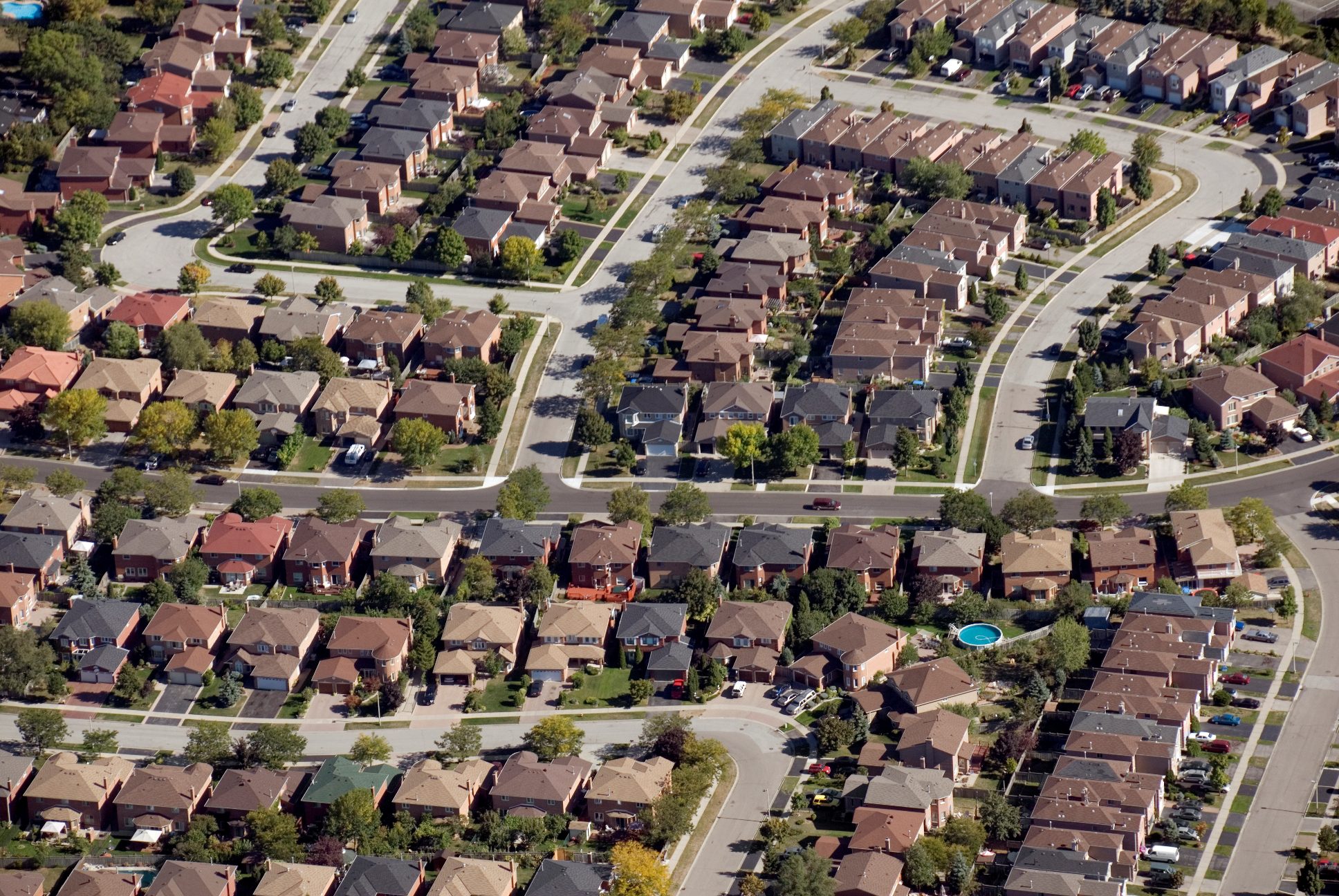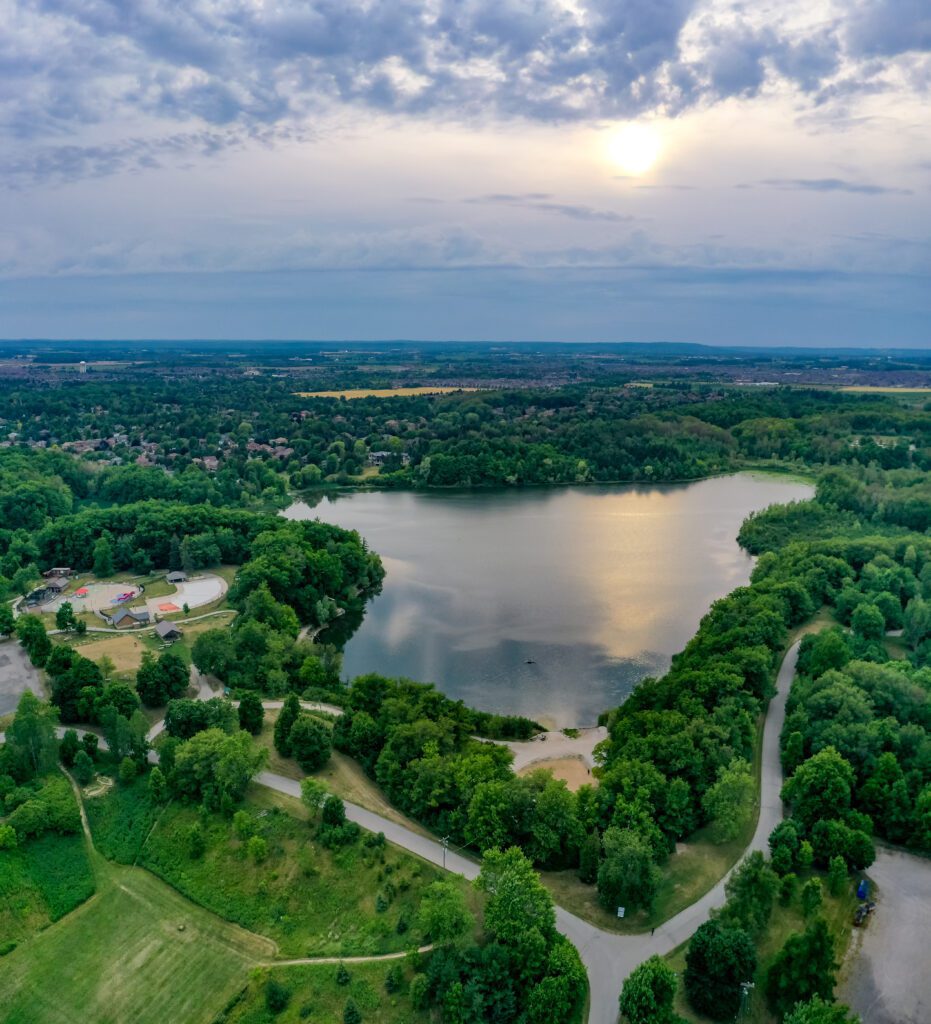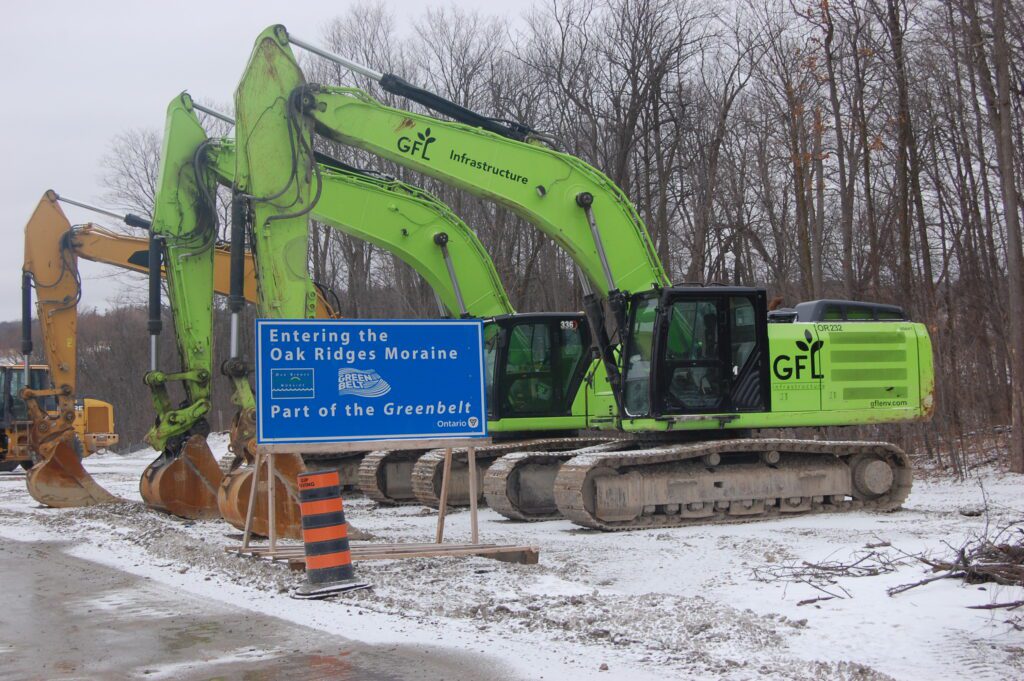Unless we push back hard and fast, large swathes of Ontario’s best farmland, most vital natural heritage, and most beautiful rural landscapes, will be swallowed up by car-dependent sprawl. Between now and July 1, 2022, the provincial government will be forcing Greater Golden Horseshoe municipalities to engage in Official Plan amendment processes that it has rigged to rapidly expand the territory available to developers, and lock in 30 more years of outdated and environmentally damaging residential and commercial sprawl.
Compared with the government’s attacks on Conservation Authorities and its aggressive misuse of Minister’s Zoning Orders to authorize individual developments, the province’s high-speed push to expand settlement areas has gone largely unnoticed. However, this “Big Sprawl” is poised to lock in environmental harms that are exponentially more severe.
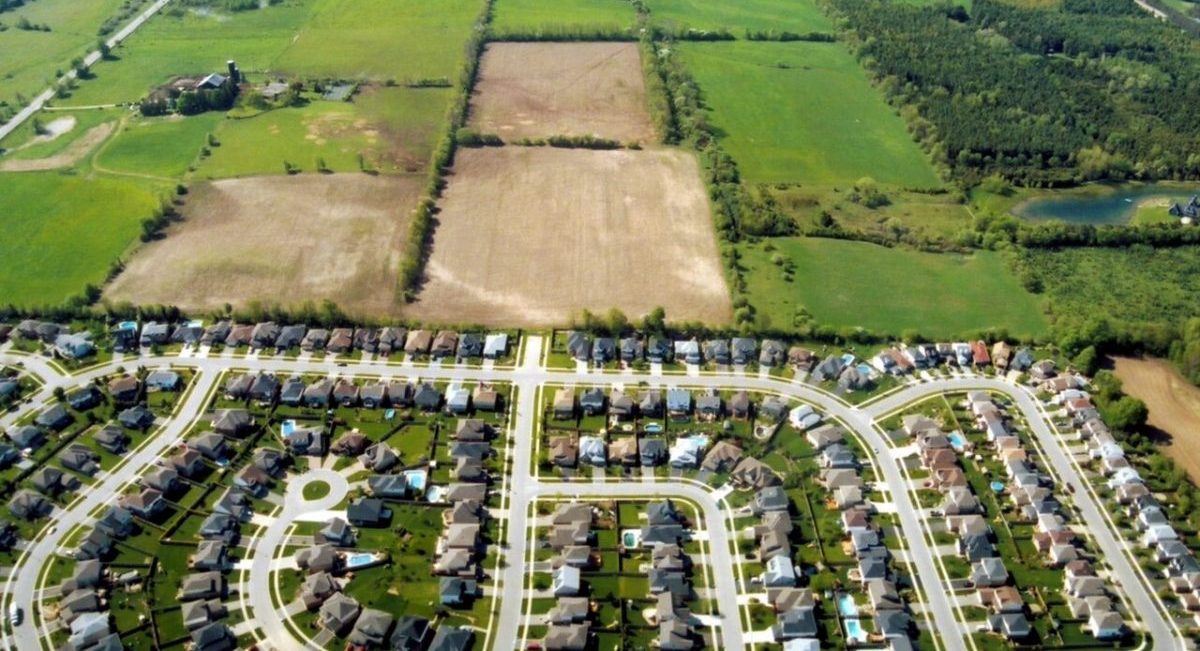
One mechanism for this harm is straightforward. Even excluding the wetlands now unlocked by Schedule 6, the “whitebelt” of unprotected GTHA farmland, fields and forests the government has now targeted for sprawl development could be much larger than the entire amalgamated City of Toronto.
Victory: Hamilton votes to end sprawl
However, the less-obvious “side effects” of the Big Sprawl would be similarly damaging. If the government succeeds in directing new residents to new “green field” sprawl, Ontario will be squandering the opportunity to fix the sprawl that is already dragging us down. The 3.5 million new GTA residents projected to join us by 2051 are just the catalyst we need to turn our existing, largely low-density and automobile-dependent neighborhoods into walkable, diverse, efficient and environmentally sustainable places to live.
The province is directing Ontario’s relapse into sprawl by stealth – using two powerful planning “instruments” that are unfamiliar to most people who aren’t professional planners:
- In August 2020, Ontario issued a revised Growth Plan for the Greater Golden Horseshoe which mandates that more than 80 per cent of nearly 3.5 million new GTA residents be pushed into low density and car-dependent suburban and rural municipalities, rather than accommodated in existing city and suburban neighborhoods that are walkable and transit-friendly – or could more easily be made so. The revised Growth Plan for the Greater Golden Horseshoe also requires that municipalities open up land on their outskirts to accommodate more than 30 years of sprawl all at once rather than gradually, or not at all. This requirement is bound to produce dislocated patches of development that do not support active or public transportation.
- In the same month, the government greatly aggravated the problems caused by its new Growth Plan targets using a still more obscure document, the ostensibly “market-based” Land Needs Assessment Methodology for the Greater Golden Horseshoe to make it even harder for suburban and rural municipalities to resist sprawl. That document is calculated to force rural and suburban municipalities to house newcomers in the same wasteful and outdated low density forms that produced stifling car-dependency in late 20th-century suburbs.
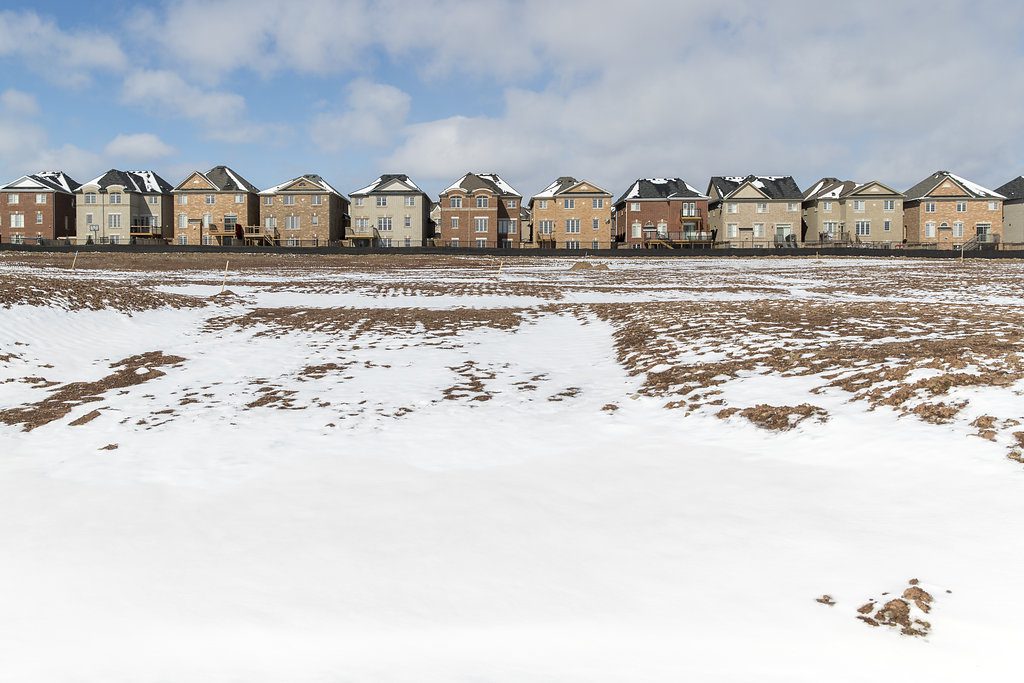
But there’s good news. It isn’t too late for Ontarians to stop the big sprawl in its tracks, and to accommodate the GTHA’s growing population in a way that actually reduces the environmental impact of our settlements.
Municipalities can’t be forced to finalize the Big Sprawl until July 1st, 2022 – after the next provincial election. Between now and next July, there will be multiple opportunities for Ontarians to both resist the push for sprawl at regional councils, and force provincial politicians to reverse course. Here’s what you can do:
- If you live in York, Peel, Halton, Hamilton, and Durham Regions or Simcoe County, organize your friends to participate in the public consultations associated with Land Needs Assessments, Municipal Comprehensive Reviews, and Official Plan Amendments in your region. These are the mandatory processes by which the government intends municipalities to make their laws conform with the new Growth Plan population targets and Land Needs Assessment Methodology, thus implementing the big sprawl. Tell local planners and councillors not to expand settlement areas, and instead to support accommodating newcomers within existing neighborhoods, or land that is already allocated to development. Tell them that you want our rural and natural areas to remain that way.
- Phone, email or zoom your Regional, City, and Town Councillors and ask them to vote against expanding settlement areas, and to vote for accommodating population growth through improvements in existing neighborhoods and more efficient use of undeveloped green field lands that have already been released for development. This is entirely workable – and desirable – because the vast majority of the GTHA was developed at densities much too low to support the quality public transit, cycling and pedestrian access to education, services and shopping enjoyed by residents of pre-WWII neighborhoods. While it isn’t what the government had in mind, this is technically compatible with the new Growth Plan and Land Needs Assessment Methodology because innovations like garden suites and laneway suites allow for large amounts of ground-related housing (as well as flats) to be accommodated through “soft intensification”.
- Organize your neighbors to “depute” (i.e. speak) in opposition at upcoming regional council meetings where settlement area expansions are being considered. Also, ask your Regional, City, and Town councillors to delay any final Council decisions on expanding settlement areas until late June or early July 2022 – after Ontario’s fixed election date. Municipalities are not required to finalize the big sprawl (i.e., bring their boundaries and official plans into conformance with the new Growth Plan for the Greater Golden Horseshoe and Land Needs Assessment Methodology) until July 1st, 2022.
- Demand that your MPP and candidates in the next provincial election commit to revoking both the new population targets in the Growth Plan for the Greater Golden Horseshoe, and the flawed Land Needs Assessment Methodology, immediately upon taking office, and before the deadline to extend municipal boundaries has passed. Demand that they replace them with new population targets that direct most growth to existing neigbourhoods in Toronto and the immediately adjoining areas of Peel, York, and Durham, so that settlement areas don’t need to expand. Make it clear to them that they won’t get your vote unless you get their commitment.
From the hobbling of Conservation Authorities and the reckless abuse of MZOs to mandate sprawl, to running an unneeded suburban highways through the Holland Marsh and even the Greenbelt, the onslaught of recent attacks on Ontario’s countryside, has united Ontario’s leading environmental organizations and grassroots groups to push back, as the Yours to Protect coalition. While each attack on the environment has been devastating in its own right, they are also laying the ground work for the mass suburbanization of the rural and natural areas that surround Toronto and its suburbs – and one whopping giveaway to developers.
While its implementation is distributed across many regional municipalities and dozens of individual decision points, the Big Sprawl would be the formalization and “locking in” of the provincial government’s sprawl agenda. If we don’t defeat it, it could be game over for our Ontario’s most productive farmland and many of its most ecologically valuable southern habitats.
For more information visit the Big Sprawl resource page
Keep up to date on the Big Sprawl and other environmental issues. Join our email community



